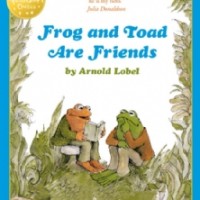Sylvia is the only dragon in the world. And being the only one is a lonely place to be. So when she befriends a little Bird, her life seems complete. But can a friendship between two such different creatures last?
Catherine Rayner has made something of a stock-in-trade bringing creatures to life with vitality and warmth. Whether a majestic tiger, a big-footed hare or an elegant giraffe with a knack for numeracy, there’s something very magical about all depictions of animals. Her creation Sylvia certainly measures up to the magical – but throws in the mythical too.
Exploring a mythical creature means no boundaries. Though of course, it does help if you have some point of reference for your drawing. And with no dragons on hand, Rayner had to find some other inspiration. Sylvia is actually based on a seahorse.
Sylvia is depicted in a deliciously delicate palette of turquoise and sea green, with her back dotted with speckles of pale blue that appear almost like stars. Her new best friend, Bird, stands out in bright canary yellow, lest her tiny figure get lost against Sylvia’s impressive largesse. The scenic backgrounds are also a glorious mix of greeny-blues, soft grey clouds (and just a puff of dragon smoke) and sweet lilac tones.
There’s an air of melancholy about sweet-natured Sylvia as she yearns to find a soul mate. Even when she discovers Bird, she still feels insecure about their friendship, fearing that Bird will forsake her to be with his own kind. Her lesson (and the gentle moral of the book) is that you don’t have to be exactly the same as someone to become their friend. Being different is OK.
This is a thoughtful and gentle tale, told in sweeping, swirling shapes as Sylvia’s long tail and neck curve in gentle shapes, almost in a swooping embrace around Bird. There are close-ups and panaronic views, including a delightful spread where Syliva and Bird are frolicking in the water, with Sylvia’s figure looking a little like the Loch Ness Monster (though there’s nothing monstrous about this gentle beast).
The pace suddenly quickens when Bird takes a tumble through the sky, only to be rescued by Sylvia, swooping down in the most dramatic fashion that dragons do so well, before a cosy ending with them both glowing in the warmth of their unlikely but loving friendship.
Did you know? The word ‘dragon’ comes from the ancient Greek word ‘draconta’ meaning ‘to watch.’ Dragons typically guard treasure, such as mountains of gold coins or gems. They are one of the few mythical monsters cast primarily as a powerful and fearsome opponent to be slain by bold adventurers.
Fun fact One of the most famous medieval British legends revolves around a knight named Saint George (the patron saint of England), who is celebrated for slaying a dragon that kidnapped the king’s daughter and rescuing the fair maiden.





